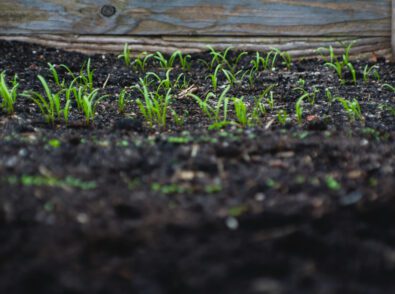How to Shop Sustainably

Every purchase you make is an opportunity to support a healthier planet. By choosing sustainable products and mindful brands, shoppers can shape a future of less waste, thriving ecosystems, and fairer supply chains. With the exciting advancements in online shopping and delivery systems, sustainable shopping is now easier than ever before. With a few thoughtful adjustments, you can make choices that benefit the environment and your life.
Understanding why sustainable shopping is needed and how to do it is important. Let’s review some simple, practical tips to help you shop sustainably and make a lasting impact.
Why Shop Sustainably?
When we choose sustainable products, we help reduce plastic pollution, preserve natural resources, and encourage businesses to embrace greener practices. Sustainable shopping supports brands prioritizing ethical labor practices and investing in renewable materials. By choosing eco-conscious companies, shoppers contribute to a growing movement that values people and the planet as much as profit.
Consumer demand for sustainable options is rising—in 2024, 46% of consumers said that they purchase sustainably sourced products to reduce their carbon footprint. Plus, 9.7% of shoppers are willing to pay more for sustainable options despite the economic and cost-of-living concerns.
Interest in sustainable products has been increasing yearly, putting pressure on brands to innovate and design stylish, high-quality alternatives that appeal to consumers over unethical counterparts.
Tips on How to Shop Sustainably
Your small choices can make a massive impact by exploring eco-friendly materials, supporting local businesses, and choosing reusable products. Here’s how:
Research Sustainable Brands
Knowledge is power, especially when it comes to sustainable shopping. Many brands share detailed information about their materials, production processes, and certifications, giving shoppers the tools to make informed decisions.
Look for companies proudly displaying their sustainability efforts, from renewable sourcing to end-of-life product disposal. Patagonia is a prime example of a sustainable brand—they are committed to environmental responsibility by using recycled materials and ethical manufacturing practices.
Choose Eco-Friendly Materials
Renewable, biodegradable, or upcycled materials reduce environmental impact and support a circular economy. Some of our favorite options include:
- Agave or sugarcane fiber: These products are ideal for single-use items like straws and cutlery, with quick, natural decomposition.
- Organic cotton: Organic cotton is the best choice when purchasing fabrics. This material is completely biodegradable—both with oxygen, known as aerobically, and without—anaerobically. Organic cotton decomposes in one to five months.
- Compostable bioplastics: Polylactic acid (PLA) is designed to break down under composting conditions, offering a plant-based alternative to petroleum-based plastic.
Choosing products from sustainable materials helps reduce waste while supporting brands committed to long-term environmental commitments.
Opt for Natural Fiber Products
Materials like agave, hemp, bamboo, and organic cotton come from plants, grow without harsh chemicals, and break down relatively easily after use.
For example, Greenprint’s agave straws and cutlery start as plant waste and are upcycled into sturdy, functional products. Once disposed of, they biodegrade naturally, leaving no lasting environmental impact. These choices support regenerative systems that work with nature rather than against it.
Buy Local and Seasonal
When it comes to food shopping, local and seasonal shopping is the answer. It supports local community businesses, reduces transportation emissions, and often delivers fresher products. Opt to purchase your weekly fruit and veg from your local farmers’ markets or craft fairs. Local shops are great places to discover unique, locally made items while keeping your carbon footprint low.
Choosing seasonal produce or locally crafted goods enhances your connection to your community, strengthens local economies, and supports a more sustainable supply chain. Next time you’re shopping, consider visiting your local market and choosing seasonal produce to support your community and the environment.
Reduce, Reuse, Recycle
We’ve been hearing the term “reduce, reuse, recycle” for decades now. But what does it mean? Prioritizing durable, reusable products and exploring creative ways to repurpose items extends their life span and reduces unnecessary waste.
- Reduce: Reducing means minimizing the amount of waste we create. Purchase items in larger quantities to reduce packaging waste. For instance, buy grains, nuts, and snacks from bulk bins instead of individual packages. This reduces plastic waste and often saves you money in the long run.
- Reuse: Reusing involves finding new ways to use items instead of throwing them away after a single use. For example, instead of discarding water bottles, clean them, cut holes in the bottom, and fill them with soil to grow some of your own vegetables.
- Recycle: Recycling is the process of converting waste materials into new products. Create a designated area in your home or office for recyclable materials, such as paper, plastic, and metal. Educate yourself on local recycling guidelines to ensure you sort and clean items correctly, making recycling easier.
Explore Secondhand Options
Secondhand stores, or thrift shops, are becoming increasingly popular. They offer a way to source unique, high-quality items, from clothing to furniture, musical instruments, and vinyl. They allow consumers to find vintage, preloved items at a fraction of the cost.
Giving products a second chance in life reduces the strain on natural resources and helps keep usable goods circulating within the economy. Finding vintage gems also means you have an item with a rich history that carries unique charm and character.
Start Your Sustainable Shopping Journey
Begin your sustainable shopping journey by researching brands that prioritize eco-friendly practices and choose products made from natural, renewable materials. Support local businesses by shopping at farmers’ markets and selecting seasonal produce. Remember to reduce waste by reusing items and recycling responsibly. Every small choice adds up to make a significant impact.
Visit Greenprint to discover various sustainable products and help create a healthier planet.





